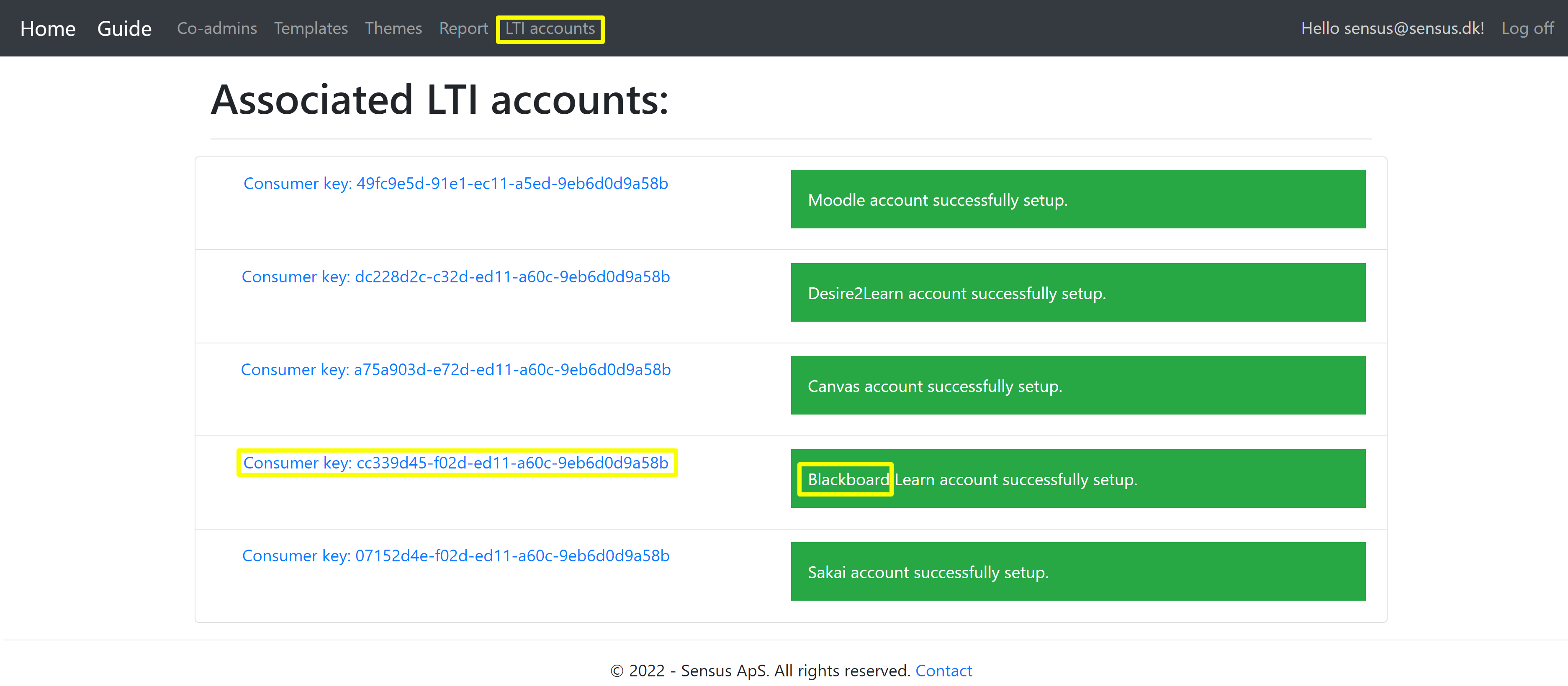Guide to setup SensusAccess LTI 1.3 with Blackboard
-
Register an account with SensusAccess LTI. Register. Once registered with SensusAccess LTI, one can receive an email confirmation mail with an approval link. Once clicked on the link and successful confirmation message, one can log in into the SensusAccess LTI portal. Remember to check spam email, if you do not see the confirmation email in the inbox.
-
Contact Sensus in order to get your LTI access credentials. In order to process your request please make sure to specify in your email/call/letter the following:
- A mention that you are requesting a SensusAccess LTI account
- Organization name (School/University)
- Full name of contact the person responsible for the SensusAccess LTI account
- The desired email address associated with the SensusAccess LTI account
- Name of the LMS Type (Blackboard), you are requesting for
-
Go to your SensusAccess LTI account, and if your account is already associated with Blackboard you will see the following page:
-
Once you click on the consumer key associated with Blackboard LMS, you will get your details.
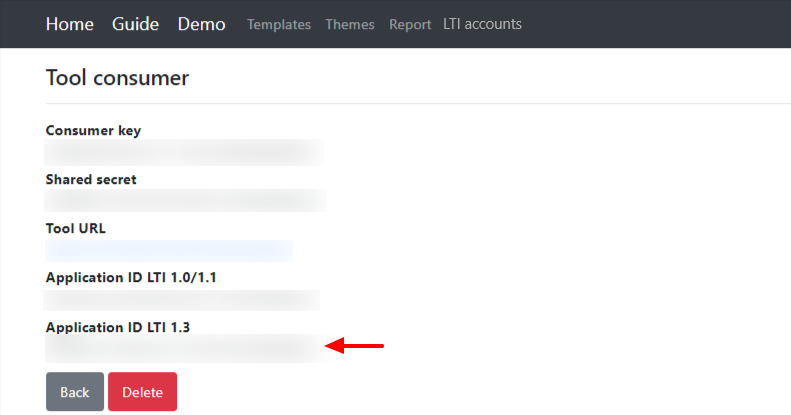
You will need both Application ID LTI 1.0/1.1 and Application ID LTI 1.3 later to create the tool. Log into your Blackboard Learn instance with an Administrator account.
-
If you have already configured the SensusAccess LTI tool during the configuration of the SensusAccess LTI 1.0/1.1, you need to skip this step.
If you are a new user of the SensusAccess LTI, you have to follow this step as well.
In the Admin panel, go to the Integrations section and click on REST API Integrations.
Click on the link Create Integration and fill the form. To fill the form, you need to have an Application ID and you can get it from step 4 on the Blackboard Learn details page. Copy Application ID LTI 1.0/1.1 from above and paste it on the Application ID field as below and hit the Submit button.

In the Admin panel, go to Integrations section and click on LTI Tool Providers.
Then, go to Register LTI 1.3/Advantage Tool section.
In the Client Id copy and paste the Application ID LTI 1.3 from your Sensus Account and submit it.
As SensusAccess LTI is using Blackboard Learn REST APIs to communicate with a course, one needs to enable REST API Integrations in Blackboard Learn instance. To enable APIs for SensusAccess LTI, follow the following steps
-
After registering provider domain, go to the Manage Placements and click on Create Placement:

Please provide the details as follows:- Label : SensusAccess 1.3
- Handle : SensusAccess13
- Availability : Yes
- Type : In type section, select Course tool and then select Allow student access.
-
Icon : Probably you need an Icon for the Tool configurations and if needed save the icon by right clicking and save the image
 .
.
- Target Link URI : https://lti.sensusaccess.com/LTI13/OIDCLogin
- Tool Provider Custom Parameters : This field is used to support localization. The tool’s default language (if not supplied any value) is en-GB. But one can provide other supported options like language=en-US or language=da-DK.
-
Now, go to the tool and click on edit. Then copy the Deployment ID of your tool to your Sensus Access account.
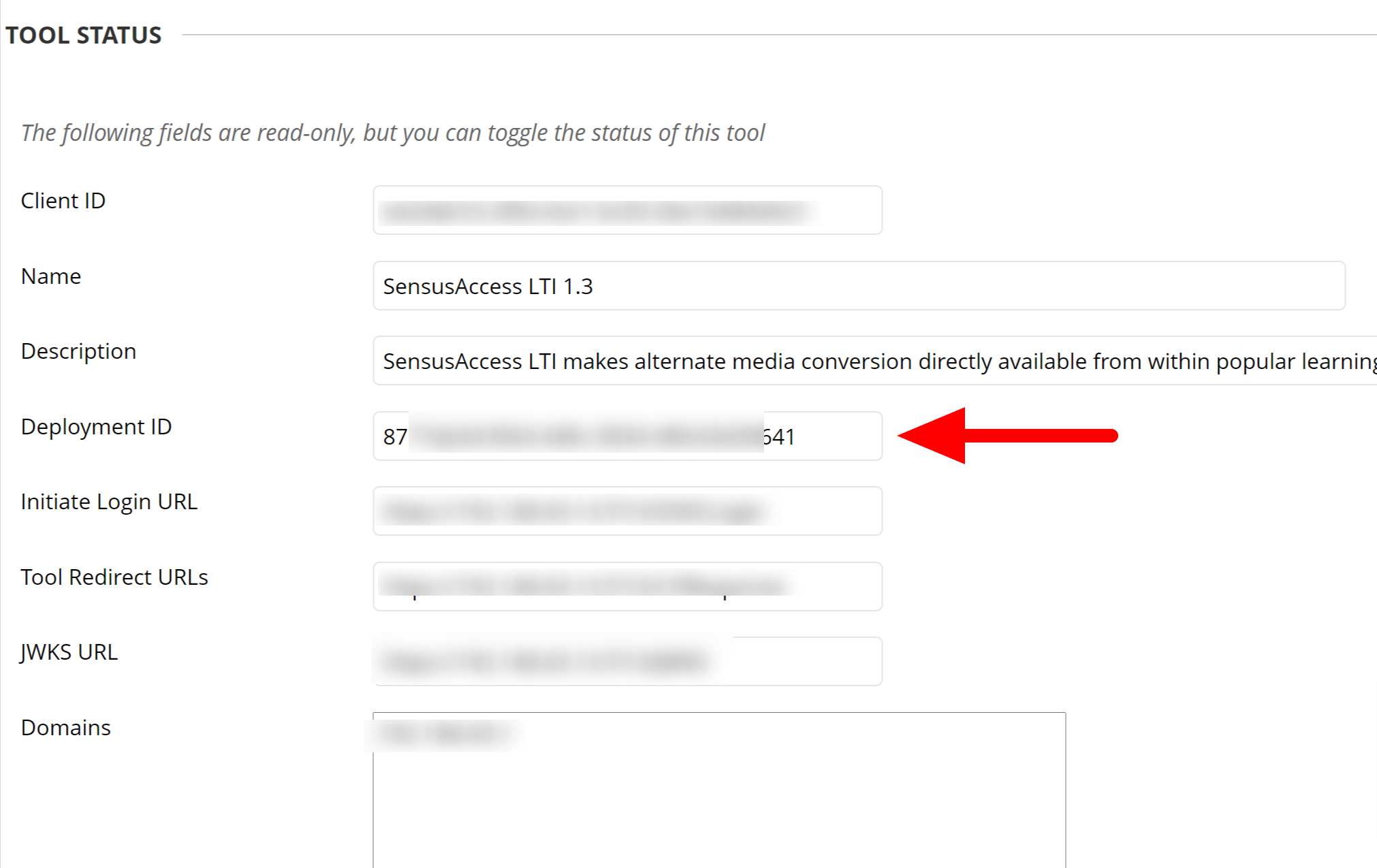
Select LTI 1.3 in the LTI Integration and paste the Deployment ID from BlackBoard and save it.
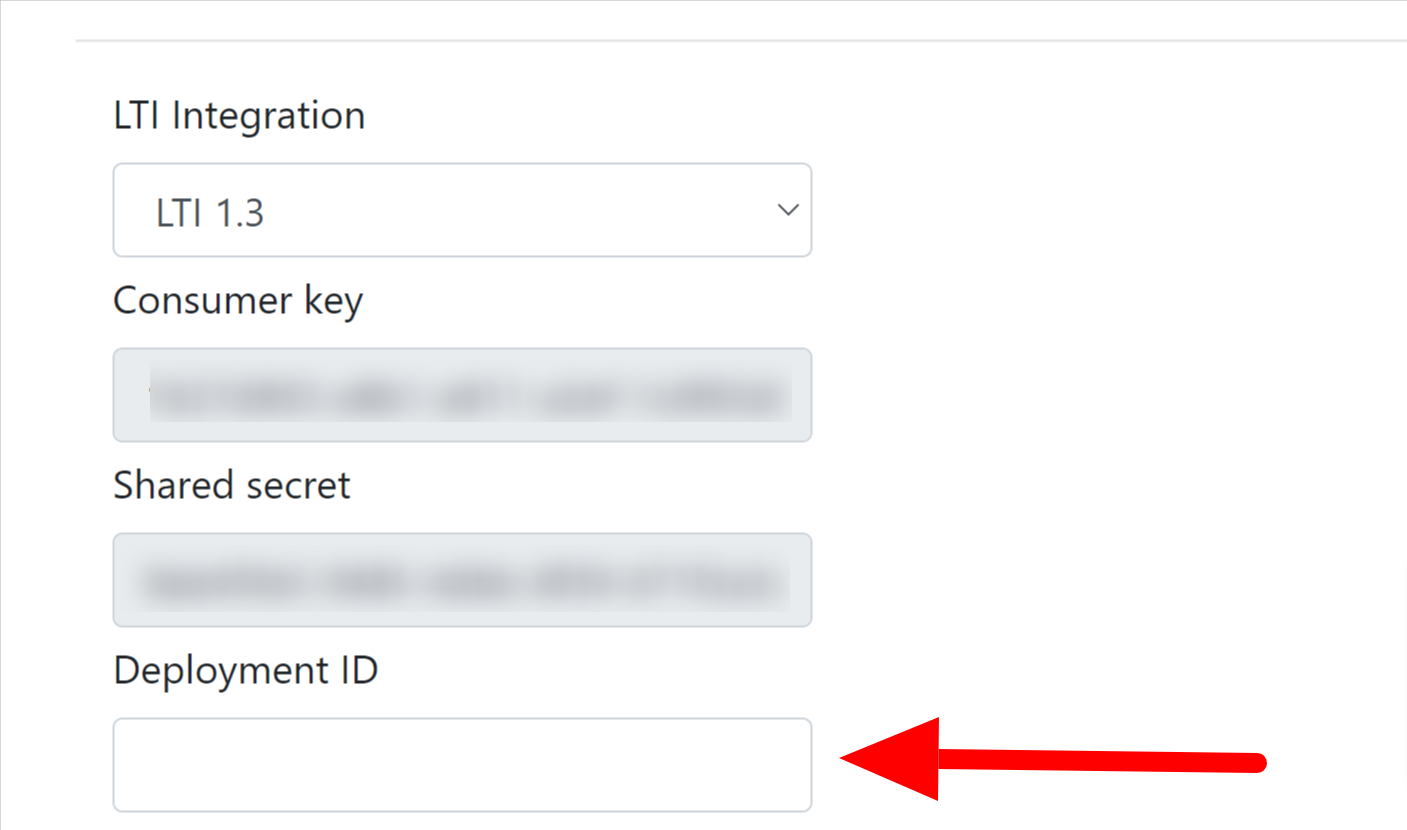
-
Note:
Blackboard Learn generates a few cookies during issuing access token in OAuth 2.0 work flow. As Safari browser by default does not allow third party cookies in an iframe.
To make the tool runable in Safari browser, there are two workarounds. First method is to check the checkbox Launch in New Window and once this option is checked the tool will be opened
in a new windows instead of opening in an iframe in the same page.
The another option is, the user has to uncheck the checkbox Prevent Cross-Site Tracking in Safari browser. See the screenshots below:
Safari browser settings in Mac

Safari browser settings in iPhone/iPad
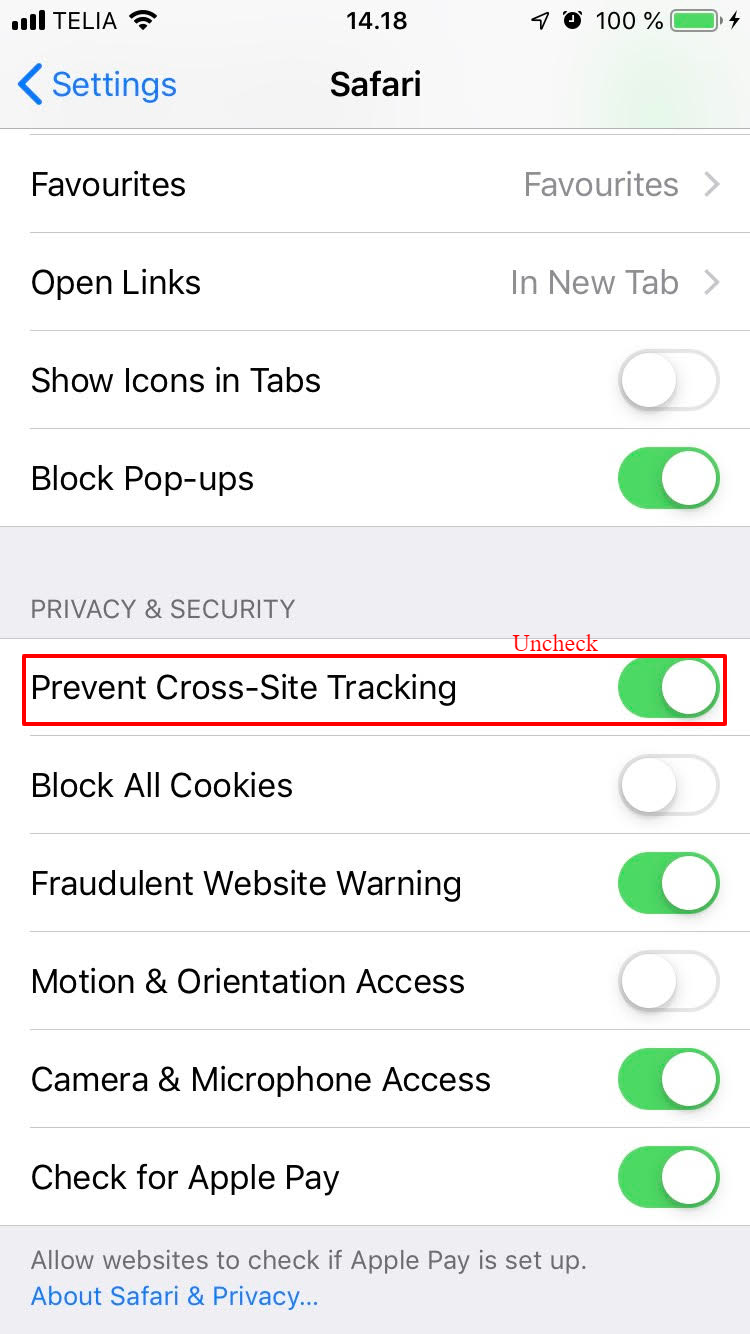
-
That’s all about the configuration and now one could access the conversion tool inside all courses.
-
Classic course
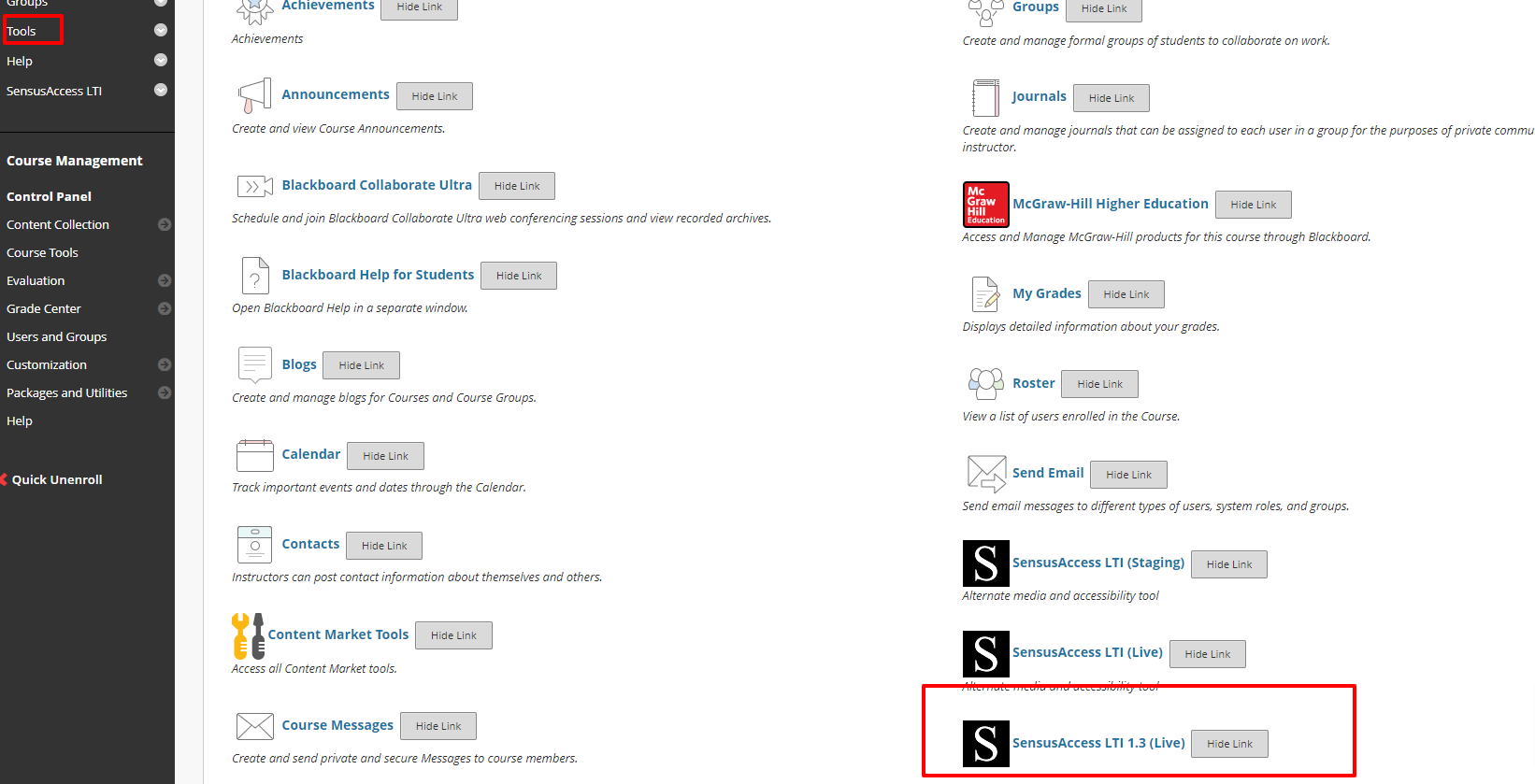
-
Ultra course

-
Classic course
-
Click on the SensusAccess Tool and for the first time the tool would ask permission and click on Allow and the final landing page will be presented with all the conversion options.
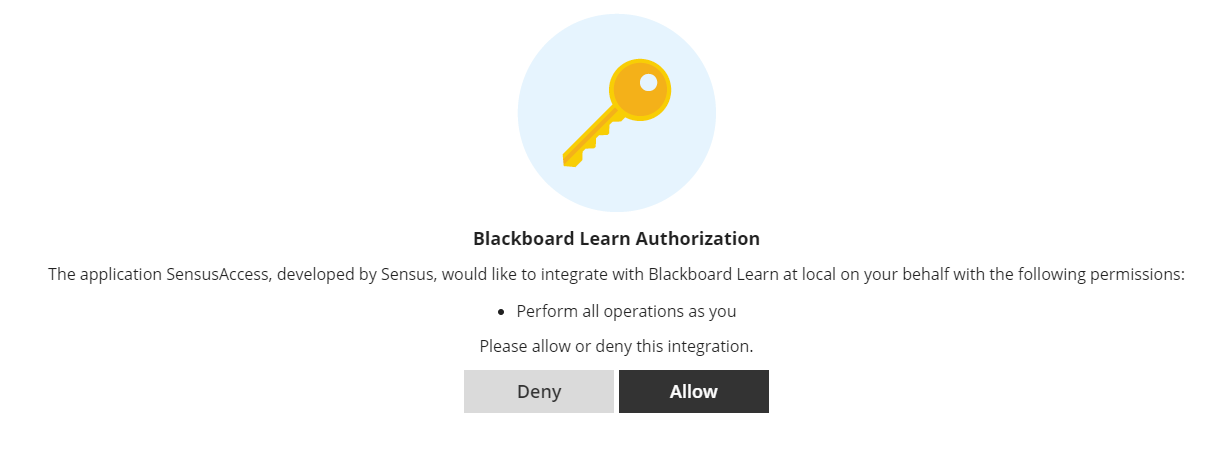
-
Once done you will be able to add the LTI Tool to any course and the SensusAccess form will appear.
The form will load automatically when clicking on the embedded link inside any course, as in the Demo. It should also be able to list all files within the course and the conversion results will be available either for direct download or sent to the email address of the logged in user.
Note: If you experience a problem with any of the above steps, please contact us via the contact options on sensusaccess.com
